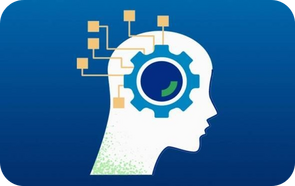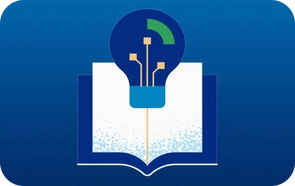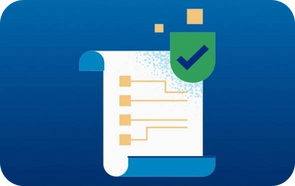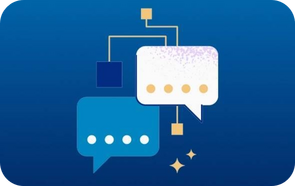Foundational Policy Ideas for AI in Education

Summary

Policy Analysis for California Education (PACE) has supported the development of AI policy informational briefs that facilitate the effective, safe, and responsible use of AI in education as a part of the TeachAI Policy Workgroup. The informational briefs included here are designed to help education leaders and policymakers understand the implications of AI in education and develop responsible policies that focus on teaching and learning and that are an extension of the AI Guidance for Schools Toolkit (released by TeachAI and PACE in Fall 2023). These resources provide policymakers at the national, state, and local levels with information that answers commonly asked questions regarding AI, based on current research and a landscape analysis of AI use in TK–12 educational spaces. The informational briefs are centered around five guiding principles on developing and facilitating policy for AI in education:
Fostering Leadership by establishing an AI in Education Task Force to oversee policy development and implementation.
Ensuring that the integration of AI in education benefits the less privileged requires both policies and effective implementation. Too often we see more focus on policy development than on implementation. Establishing an AI task force or cross-sectoral group responsible for overseeing the development and implementation of AI in education policies will enhance accountability and transparency.”
—Juan-Pablo Giraldo | Education Specialist, United Nations Children's Fund (UNICEF)
Promoting AI Literacy to integrate AI skills and concepts, including their foundational principles, social impacts, and ethical concerns, into existing curriculum and instruction.
Comprehensive AI literacy is fundamental to ensuring that AI is used in ways that maximize benefits and mitigate harms. All students and educators need opportunities to learn about AI, think critically about its limitations, and explore how to harness its power to enhance, not replace, human cognition, creativity, and interaction."
—Daaiyah Bilal-Threats | Senior Director, Education Policy and Implementation Center, National Education Association (NEA)
Providing Guidance to equip schools with guidance on the safe, effective, and responsible use of AI.
Governing boards must adopt and monitor compliance with security and privacy policies, ensure that students and staff are provided clear guidance related to the opportunities and risks of AI and the responsible and prohibited uses of AI tools, and verify that students and staff are adequately trained to ensure safe use of AI."
—Thomas Bertrand | Executive Director, Consortium of State School Boards Associations (COSSBA)
Building Capacity by providing funding and programs to support educator and staff professional development on AI.
Our education system champions learners at every level, and that includes our teachers. As state education leaders plan for the smart and effective use of AI in the education space, a critical component is ensuring teachers and other educators have the professional learning and supports they deserve to help students be successful.”
—Jonathan Moore | Chief Strategy Officer, Council of Chief State School Officers (CCSSO)
Supporting Innovation that promotes the research and development of safe and effective AI in education practices, curricula, and tools.
AI offers the possibility of increasing innovation in education if we do it in a thoughtful way that considers safe and effective practices. We should use this moment to use the power of AI to define the future of education we desire."
—Keith Krueger | CEO, Consortium for School Networking (CoSN)
Included in this release are three informational briefs that can be used to inform ongoing AI policy conversations in California as well as two additional briefs on the status of AI policy in the United States and worldwide.
What Is AI?
Build a basic understanding of AI, address common misconceptions about AI, and explore the importance of AI literacy to inform responsible decisions on relevant AI issues in education. Download the What Is AI? informational brief here.
AI in Education and the Workforce
Learn what it means to teach with and about AI, as well as the potential benefits and risks of AI in education. Learn about impacts on the workforce and policies that can address these issues. Download the AI in Education and the Workforce informational brief here.
Classroom Perspectives on AI
A snapshot of student, teacher, and parent beliefs about AI in education, as well as classroom use cases and related ethical concerns. The brief includes a discussion of how to reduce potential AI divides in education. Download the Classroom Perspective on AI informational brief here.
About the policy resources
Representatives from organizations participating in TeachAI—AASA, AFT, CCSSO, Code.org, CoSN, COSSBA, InnovateEDU, Education Commission of the States, ETS, ExcelinEd, NASBE, NSBA, NEA, SEAMEO, SETDA, UNICEF and the World Bank—led the development of these policy resources.
The TeachAI Policy Workgroup includes: Adobe, AI for Education, aiEDU, Amazon Web Services, The College Board, Center for Security and Emerging Technology, Data Science 4 Everyone, Digital Promise, ETS, European EdTech Alliance, GitHub Education, Google, Grok Academy, IndiGenius, Infosys Foundation USA, Microsoft, NASBE, National Council for Teachers of Mathematics, One Generation–Indigitize, Policy Analysis for California Education (PACE), Pearson, RobinCode.org, Sociedad Científica Informática de España (SCIE), Teach For All, and the TeachAI Government Agency Policy Workgroup.
These policy resources are openly available for reuse under a Creative Commons BY-NC-SA 4.0 license.
TeachAI is an initiative uniting education and technology leaders to assist governments and education authorities in teaching with and about AI. It is led by Code.org, ETS, the International Society for Technology in Education, Khan Academy, and the World Economic Forum. It is advised by a diverse group of 100+ organizations, governments, and individuals. TeachAI’s goals include providing policy guidance, increasing awareness, and building community and capacity.






